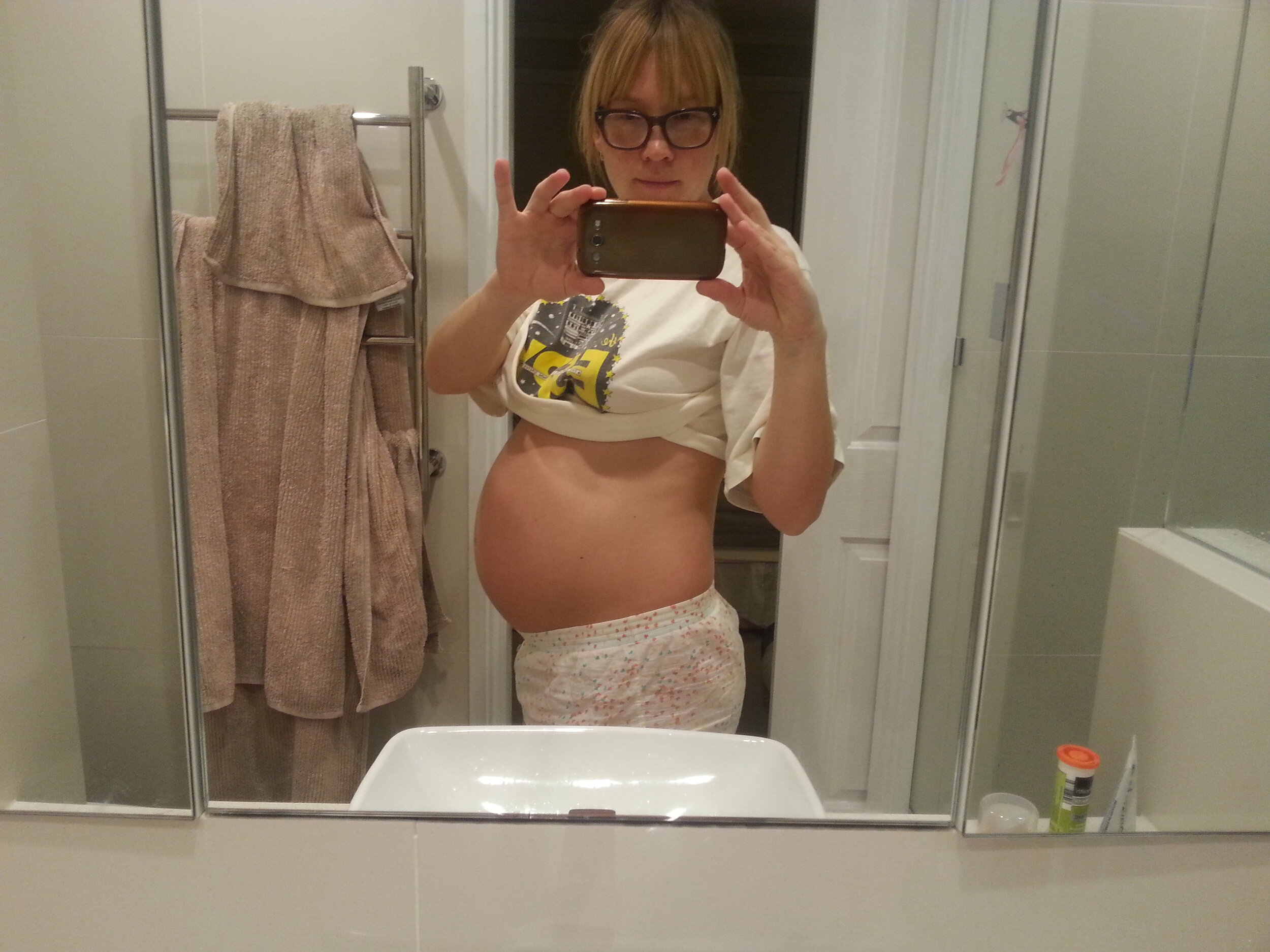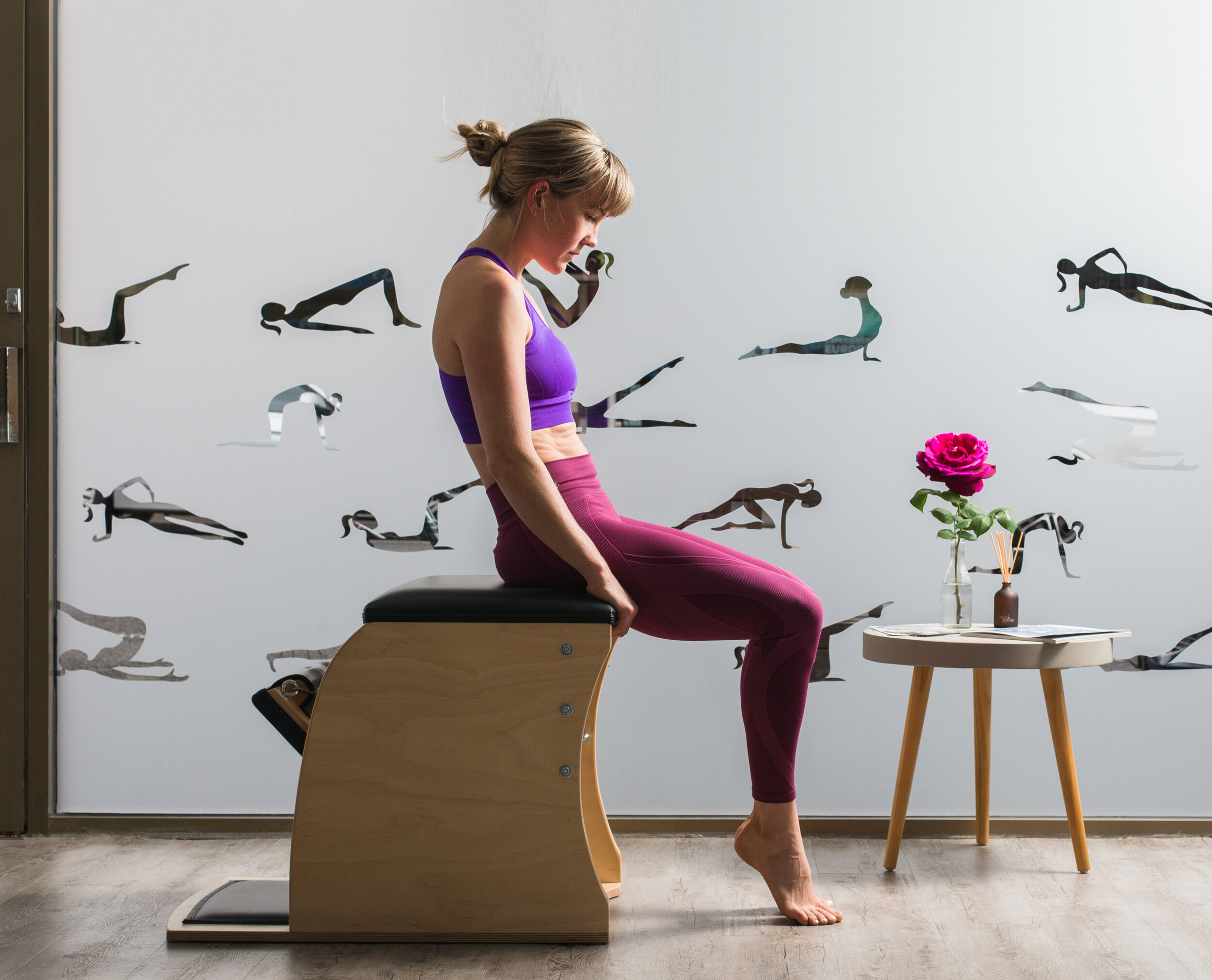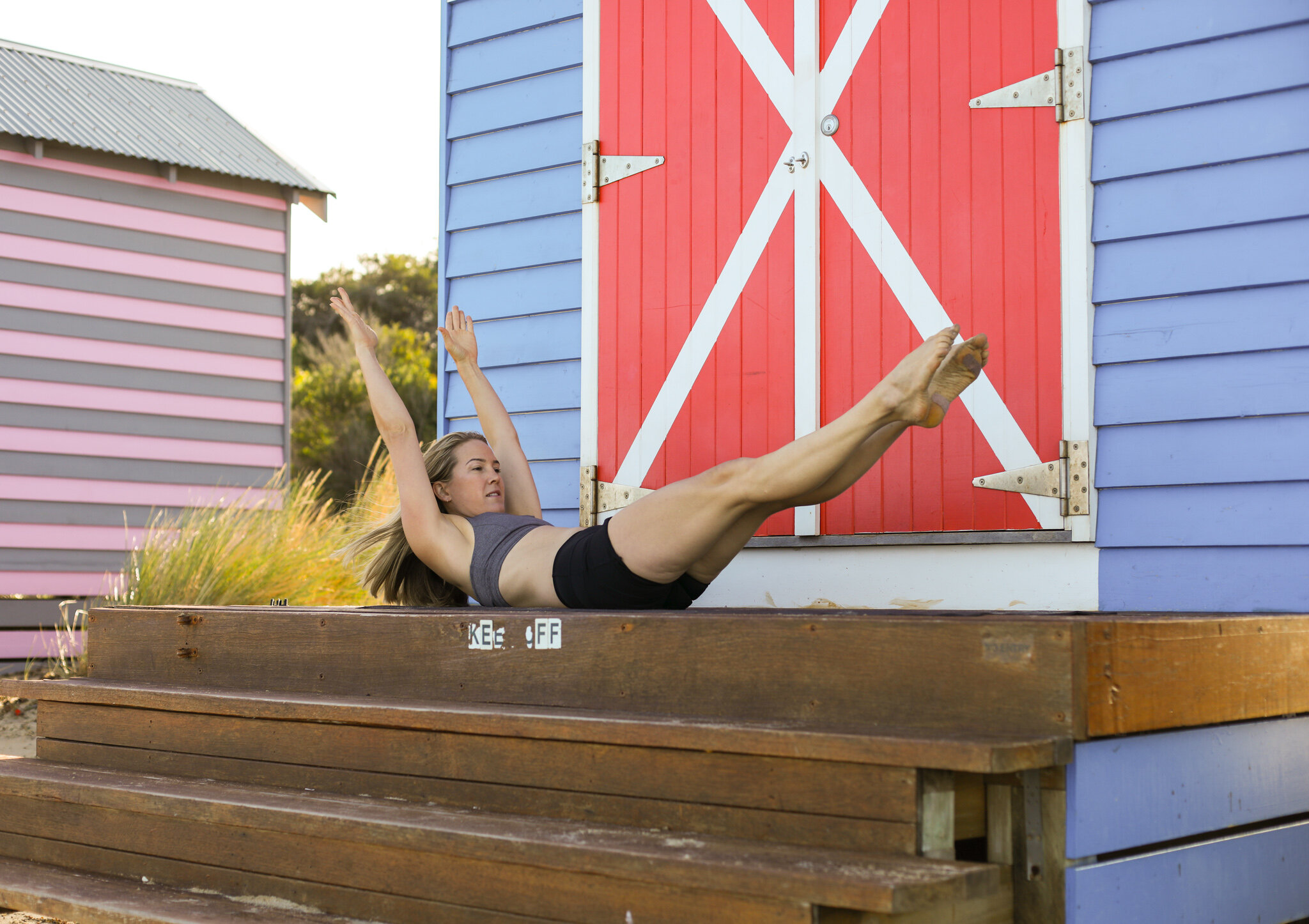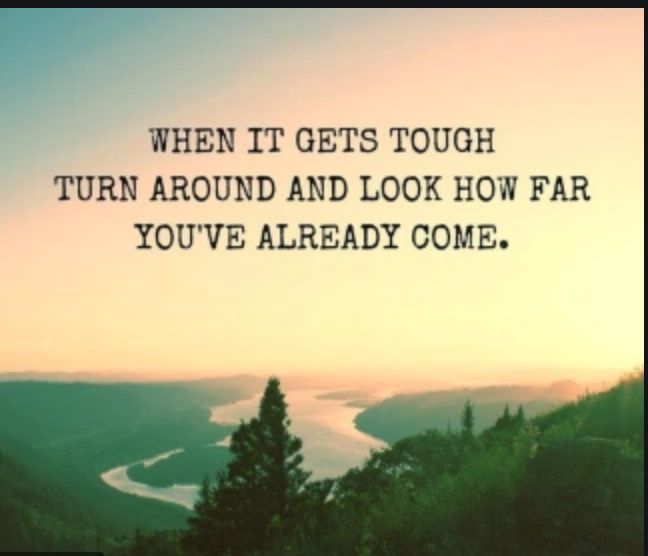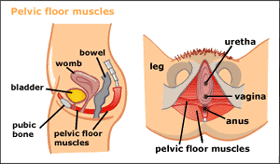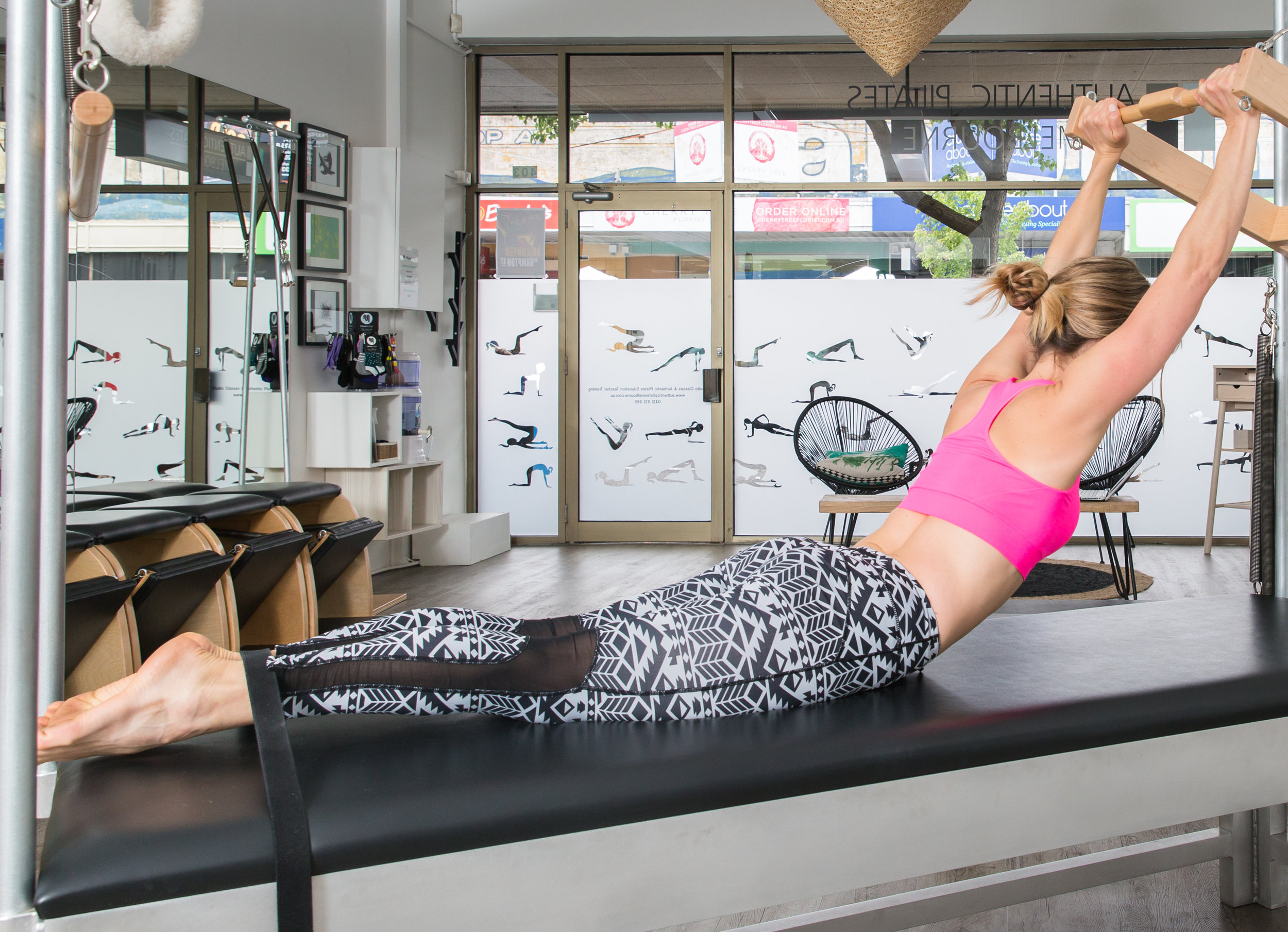Back Pain.
Arghhhh.
Most of us will either………
Have it.
Had it.
Will experience it to some degree at some point in your life.
It’s pretty common. In fact, an article published by Monash University, suggests that low back pain is the leading cause of disability globally – with more than 540 million people affected by activity-limiting low back pain at any one time! The article goes on to state that the burden from low back pain has doubled in the last 25 years. Sheesh.
I have it too.
Yep, I know, the Pilates teacher who has built a career on making people stronger, longer, more mobile, experience less pain, is a back pain statistic.
I have a back condition called spondylolisthesis (spondy). All those years doing gymnastics as a kid is not great on a developing spine and I now have a minor disc slipage in the lower vertebrae. Never knew about it growing up, never hurt either… until one year, many moons ago, I thought I’d give running a crack. Like proper runnings, not just my jolly 4km block laps I like to do nowadays. So, I did a couple of 10km fun runs, then I did a half marathon. Fun. Exhilarating. Then I thought it would be a good idea to build up to a full marathon. Bad Idea. That sh$t is mental. Body starting failing me miserably. I’m talking shin splints, bakers cysts, pulled hamstrings and all of a sudden this persistent low back pain that just wouldn’t go away. After an X-ray, I was told I had Spondy and had probably always had it. Great. As I walked out of the Chiro’s office, he bid me a-due with this little nugget… ‘watch out for when you have babies, pregnancy won’t be much fun for you’. Ummmm yeah, thanks. Can’t bloody wait.
Fast forward a few years, and yep, he was right, pregnancy was not fun (is it ever?! Sorry if you were a glowy cloud of sunshine in your pregnancy but that just seems so far away from my experience…thank goodness that pain ends when the human exits your body!) Especially the second time around. Ouch. I distinctly remember saying to my partner at 15 weeks pregnant the second time, ‘please remind me of these firey pits of hell-pain when I say to you let’s have another baby’.
Me at about 30 weeks pregnant.
So, yeah, spondy and pregnancy are not a match made in heaven. Which makes sense really, when you have a wide, big load at your front, your lordosis (or excessive inwards curve) through your low bag is exacerbated, and this adds more pressure to the affected spondy area.
These days, I feel it most when I spend too long working at the computer, or my shoes are too high, or I’m carrying the kids for too long. These are all common movements that put the pelvis into an anterior tilt, exaggerates the lordosis and flares up the spondy.
The only thing that makes it feel better is more Pilates. A bit of rest doesn’t go astray either. But when it comes to movement, Pilates literally keeps me together. I usually need to do LESS running and LESS HIIT workouts when it gets really bad (other physical pursuits I enjoy), but never less Pilates. Sure Pilates at the top of its game can have you swinging from straps and bars and all sorts of fancy things, but at its foundation are simple principles that build the skills needed to support your spine. So when I’m suffering, I know I need to scale things right back, go into nurture mode, focus on the Pilates basics, breathe, roll and release (full credit to my Osteo here too!) and I will always come out the other side.
So whether you have spondylolisthesis or are suffering from other kinds of back pain/discomfort, let me teach you the Pilates basics and foundational movements to nurture your spine back to a place where you feel stronger and more mobile and most importantly, equip you with tools to use to help alleviate those pain points in the future. Shoot me an email kirsti@kirstipilatestoyou.com.au and we can discuss some times that will work for your next class.
Image by @neetaphotography
In the meantime, check out these 5 exercises to help ease back pain. We regularly do them in my classes. They are a great starting point to work on more mobility in commonly tight and stuck areas of the spine, while also introducing some strength work that’s necessary for a supportive core.
Wall roll down
Leaning up against a wall, with your feet away from the wall, lengthen your spine up the wall. Reach your arms out in front of you, be mindful to keep your shoulder blades on the wall when you are setting up. Peel yourself off the wall from the head down, so you are left with just your bottom on the wall. Keep the back of your legs wrapped and squeezing together, keep your tummy pulled up into your spine to feel the stretch through all the vertebrae of the spine. Stack back up the wall one vertebrae at a time. Aim for 3-5 repetitions.
Shoulder Bridge/Pelvic Curl
Lying on your back with your knees bent and your feet slightly apart in parallel. Start by tilting your pelvis upwards so you feel your low back imprint into the ground, then continue to peel your spine off the mat, vertebrae by vertebrae until your reach your bra strap (or heart rate monitor) line. In this bridge position you want your knees to be the highest point, followed next by your pubic bone, then your hip bones, then your belly button, then your ribs. This creates a C-curve shape through your spine which lengthens the low back, works the abdominals and hamstrings. Articulate your spine down to the ground in the reverse direction - from your upper back touching the mat first, then middle back, then lower back. Aim for 5-8 repetitions.
Supine spine twist
Lying on your back with your legs at tabletop (if this feels like too much load for your back, this can also be done with feet on the ground), move your legs to the right, so your left hip comes off the ground but your left shoulder does not and you can maintain stacked knees. To return the legs to the centre, think about your torso being like a wet towel, which you need to wring out. This helps connect the movement to the powerhouse and not just a transfer of weight through the pelvis. Repeat to the other side. Aim for 3 each side.
Book openers
Lying on your side, with your arms reaching out straight in front of you and your knees bent up to 90 degrees in from to you. Lift the top arm up to the ceiling then back behind you, following your fingers with your eye gaze to open the chest up. Try and keep your knees stacked to increase the stretch. Return the arm to the other arm and repeat. Aim for 5-8 each side.
Basic Extension
Lying on your tummy with your hands flat on the mat, near your lower ribs, hug your elbows inwards and keep your shoulders away from your ears. Start to lift your chest and head through your arms, like a string that is attached to your heart is tugging your chest forwards and up. What the legs do is really important in this extension, so make sure they are active. That means, they are reaching out long out of your hips and you’re pulling your tummy button off the floor while your pubic bone is pushing into the floor, this will fire up the back of the legs to support your lower back while your upper back lifts and extends.


